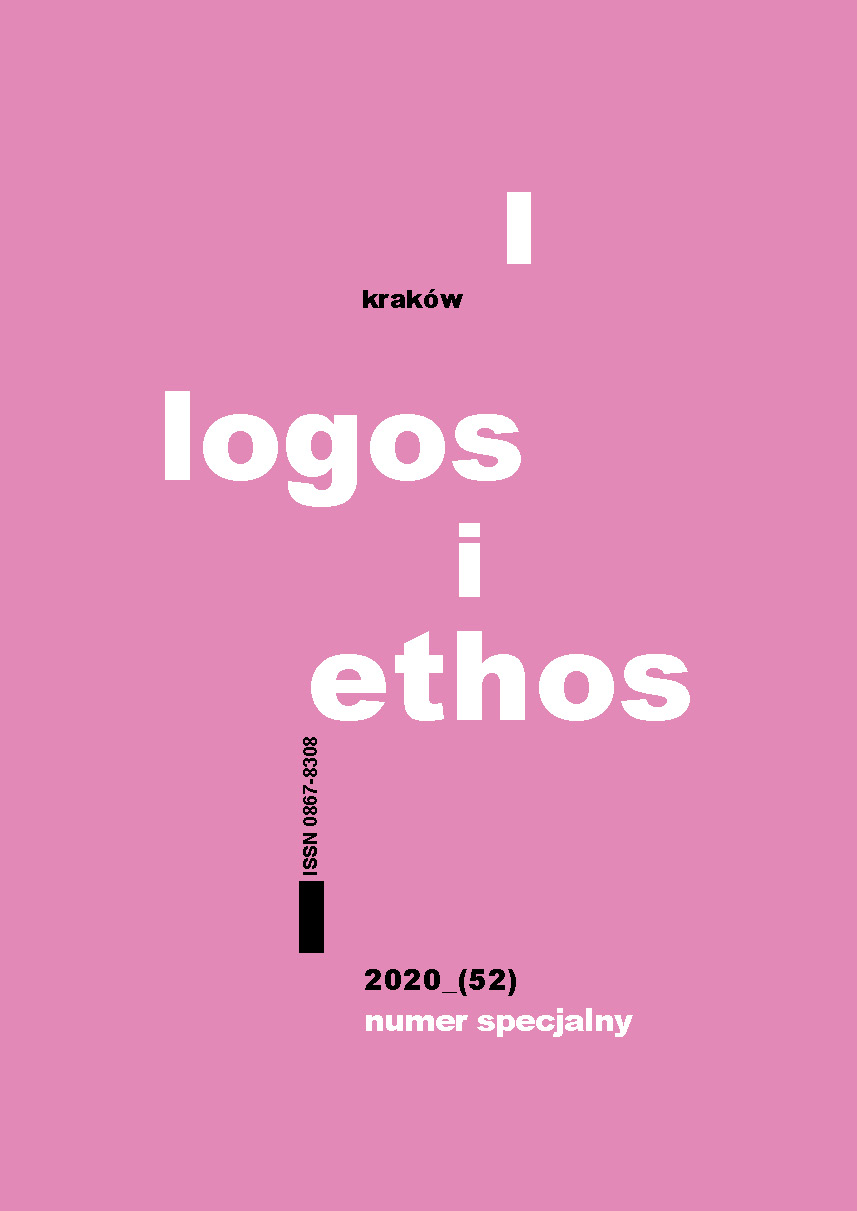Ciało i cielesność w świecie wirtualnym na przykładzie reklamy, sztuki i mediów społecznościowych (wybrane problemy)
DOI:
https://doi.org/10.15633/lie.3580Słowa kluczowe:
ciało wirtualne, reklama, body art, społeczność Porcelanowych MotyliAbstrakt
Celem referatu jest refleksja na temat ciała i cielesności pojawiająca się w Internecie. Temat ten podporządkowany jest współczesnym ideologiom, więc wyznacza sposób myślenia ludzi współczesnych, nowe trendy, mody, działania i funkcjonowanie całego systemu aksjologicznego. Ciało i cielesność podlega współczesnym ideologiom: konsumpcjonizmu, indywidualizmu, zabawy i ludyczności, codzienności i transparencji. Do analizy wybrano ciało przedstawiane w reklamie, ciało w sztuce na podstawie przypadków Stelarca oraz ciało przedstawione na portalu Porcelanowych Motyli. Rozważaniom towarzyszy refleksja etyczna i aksjologiczna.
Bibliografia
Baudrillard J., Społeczeństwo konsumpcyjne: jego mity i struktury, tłum. S. Królak, Warszawa 2006.
Bauman Z., Konsumowanie życia, tłum. M. Wyrwas-Wiśniewska, Kraków 2009.
Bauman Z., Kultura w płynnej nowoczesności, Warszawa 2011.
Bez tabu i bez cenzury. Porcelanowe motyle, https://www.goldenline.pl/grupy/Zainteresowania/bez-tabu-i-bez-cenzury/porcelanowe-motyle,1657960/ (10.12.2019).
Biskupski Ł., Nieznośna lekkość bytu. O Sterlacu i metaforze ciała w świecie postbiologicznym, http://e-splot.pl/index.php?pid=magazyn&id=1 (10.12.2019).
Brzozowska P., Moda na anoreksję. Ruch proana rośnie w siłę, a my nie umiemy go zatrzymać, https://kobieta.wp.pl/moda-na-anoreksje-ruch-pro-ana-rosnie-w-sile-a-my-nie-umiemy-go-zatrzymac-6177364808443521a (10.12.2019).
Hirszfeld A., Mięso, metal i kod. Rozmowa z Stelarkiem, https://www.dwutygodnik.com/artykul/5263-mieso-metal-i-kod.html (10.12.2019).
Kita M., Dyskurs prasowy, w: Style współczesnej polszczyzny: przewodnik po stylistyce polskiej, red. E. Malinowska, J. Nocoń, U. Żydek-Bednarczuk, Kraków 2013, s. 235–247.
Kluszczyński R. W., Społeczeństwo informacyjne. Cyberkultura. Sztuka multimediów, Kraków 2002.
Kluszczyński R. W., Sztuka interaktywna: od dzieła – instrumentu do interaktywnego spektaklu, Warszawa 2010.
Kowalczyk S., Ciało człowieka w refleksji filozoficznej, Lublin 2009.
Lewiński P. H., Retoryka reklamy, Wrocław 1999.
McLuhan M., Wybór tekstów, red. E. McLuhan, F. Zingrone, tłum. E. Różalska, J. M. Stokłosa, Poznań 2001.
Ożóg K., Polszczyzna przełomu XX i XXI wieku: wybrane zagadnienia, Rzeszów 2007.
Pro-ana w dążeniu do ideału, https://pro-ana-notperfectlife.blogi.pl/ (10.12.2019).
Sakson-Obada O., Trauma jako czynnik ryzyka dla zaburzeń Ja cielesnego, „Przegląd Psychologiczny” 52 (2009) nr 3, s. 309–326.
Skowronek K., Skowronek B., Ideologia przekazu telewizyjnego (na przykładzie stacji telewizyjnej AXN), w: Komunikowanie (się) w mediach elektronicznych: język, edukacja, semiotyka, red. M. Filiciak, Warszawa 2009, s. 314–327.
Szczęsna E., Poetyka reklamy, Warszawa 2001.
Zawojski P., Destrukcja versus wspomaganie ciała w cyberprzestrzeni. Przypadek Stelarca, http://www.zawojski.com/2006/04/19/destrukcja-versus-wspomaganie-ciala-w-cyberprzestrzeni-przypadek-stelarca/ (10.12.2019).
Zierkiewicz E., Kowalczyk I., Konsumentka czy konsumowana? Kobieta do zjedzenia w prasie kobiecej, „Kultura Popularna” 2002 nr 2, s. 6.
Pobrania
Opublikowane
Numer
Dział
Licencja
Autorzy publikujący w czasopiśmie udzielają jego wydawcy zgody o następującej treści:
- Autor zachowuje autorskie prawa majątkowe do utworu, a jednocześnie udziela wydawcy czasopisma zgody na jego pierwszą publikację w wersji drukowanej i wersji online na licencji Creative Commons Uznanie autorstwa 4.0 Międzynarodowe oraz zgody na wykonywanie opracowań, w tym przekładów.
- Autor ma możliwość udzielania zgody niewyłącznej na opublikowanie utworu w wersji, która ukazała się w czasopiśmie (np. zamieszczenia go w repozytorium instytucjonalnym lub opublikowania w książce), wraz z informacją o jego pierwszej publikacji w czasopiśmie.
- Autor może umieścić swój utwór online (np. w repozytorium instytucjonalnym lub na swojej stronie internetowej) jeszcze przed zgłoszeniem utworu do czasopisma.

